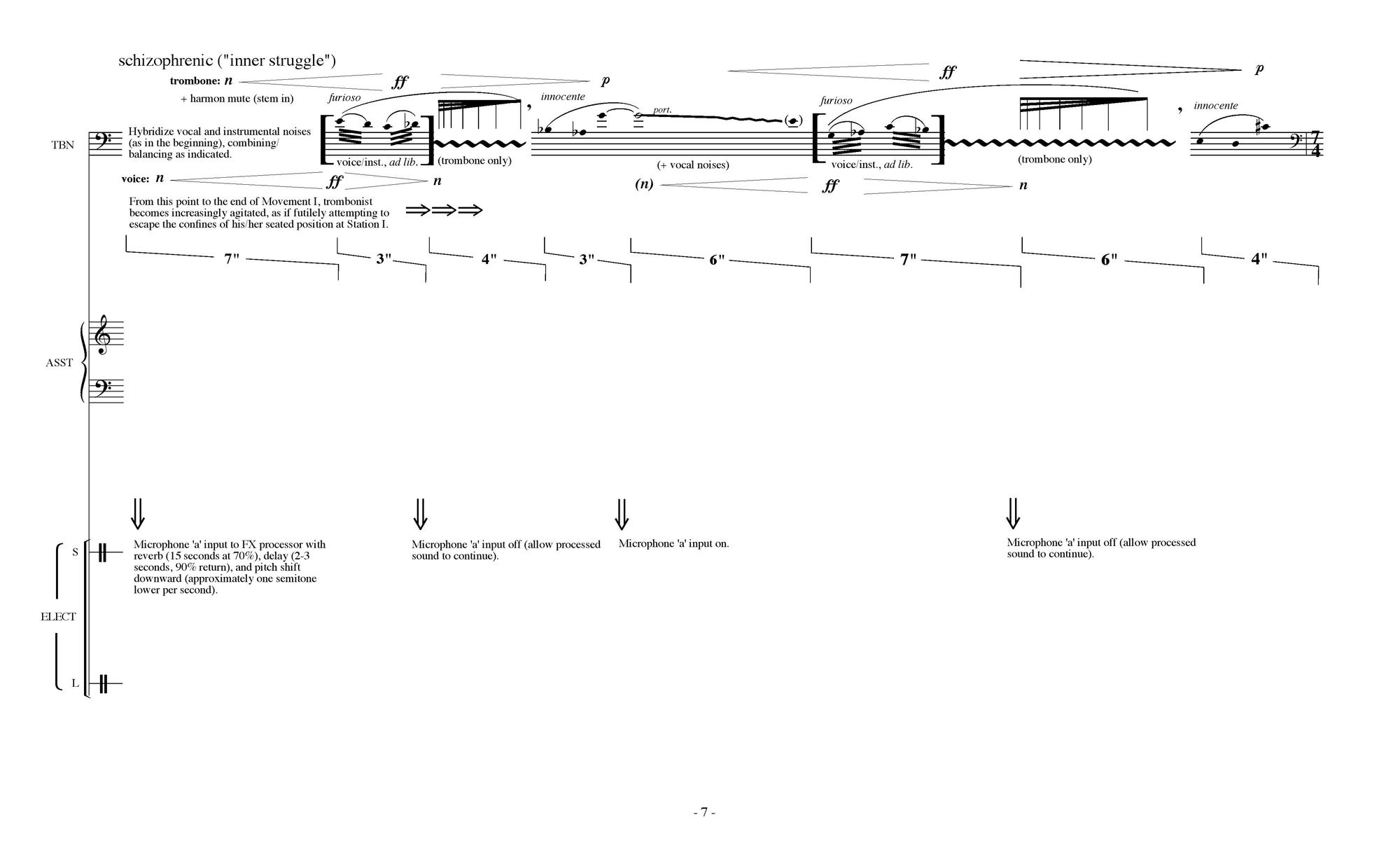Description of Music
This composition is a very experimental treatment of Rossetti’s poem, and seeing the musical score confirms its unconventional nature. Furthermore, the text/music relationship is highly individual as well. According to the program notes: “The work itself is not intended as a programmatic representation of the poem, but is rather a structural and psychological study of the actions and characters portrayed therein; as such, it exists as a parallel or alternate realization of the original, almost as a shadow or specter” (Klein, p. i). An understanding of the “structural” and “psychological” organization behind Klein’s work is enhanced by a careful reading of the names assigned to each of the five movements, which are structured according to the “dramatic unfolding of the poem” (Klein, p. i). The movements are then subdivided into smaller sections, corresponding in number and duration to the verse paragraphs in the text, “thus, the pacing of the musical work is based directly upon that of the poem itself” (Klein, p. i).
The Notes in the score provide the names of each of these movements:
- I. come buy, come buy (exposition: soliloquy and dialogue)
- II. open heart/absent dream (theme & variations 1-5)
- Theme
- Variation 1: dormant
- Variation 2: pastoral
- Variation 3: melancholy
- Variation 4: empty
- Variation 5: urgent
- III. Laura dwindling (passacaglia)
- IV. resistance (improvisation)
- V. bitterness without a name (epilogue: variations 6-12)
- Variation 6: delirious
- Variation 7: passionate
- Variation 8: anxious
- Variation 9: fervid
- Variation 10: resolute
- Variation 11: susurrant
- Variation 12 (coda): reflective
In addition, tonally the composition is structured precisely, with Lizzie and Laura each being represented by mutually exclusive pitch cells, “one consisting of five pitch classes, the other of seven (thus comprising all twelve pitch classes when combined).” Furthermore, the pitch cells are used according to the action and narrative structure in the poem, and “the 5:7:12 scheme is also used proportionally throughout the work, evidenced primarily in the temporal relationships between the various elements within the environment and solo parts” (Klein, p, i). Klein elaborates further:
The musico-dramatic content of each section of the work is the result of a psychological extrapolation of the drama within the poem, which has then been superimposed upon or recast within more traditional formal models. However, in several cases these boundaries have been obscured as a result of the various interrelationships: for example, the theme of the second movement variations is actually a paraphrase of the second section of the first movement, as well as a miniature set of variations in itself; the variations of the second movement continue in the fifth movement, after being interrupted by movements III and IV; the third movement is a passacaglia (i.e. continuous variations) based exclusively upon the seven note pitch cell, and is thus an extension of (or obsession upon) variation 4 of the second movement. In a broad sense then, the entire work may be viewed as a set of variations on the two pitch cells (thus making the second and fifth movements “variations within/upon variations”). (Klein, p. i)
Source:
Klein, Joseph. “Goblin Market.” Joseph Klein, Division of Composition Studies, College of Music, University of North Texas, josephklein.music.unt.edu/compositions/goblin_market. Accessed 15 Dec. 2017.
next exhibit
- Aaron Jay Kernis’s “Goblin Market" (1995)
- choose another setting of "Goblin Market"


